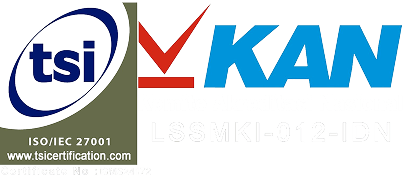Asset tokenization refers to the process of converting rights to an asset into a digital token on a blockchain. This transformation enables various types of assets, including real estate, art, and financial instruments, to be represented and traded easily in a digital format.
Importance of Asset Tokenization in Modern Finance
The impact of asset tokenization on finance is profound, as it enhances accessibility and liquidity across markets. Here are some key benefits:
- Enhanced Liquidity: Tokenization allows for fractional ownership, enabling more investors to participate in high-value assets.
- Improved Transparency: Blockchain technology ensures that all transactions are recorded and visible, reducing fraud.
- Cost Efficiency: By minimizing intermediaries, transaction costs are significantly lowered, making finance more inclusive.
- Regulatory Compliance: Smart contracts can be programmed to meet compliance requirements automatically.
Historical Context of Asset Tokenization
The concept of tokenization isn’t brand new; it has evolved over the years alongside technological advances. Initially rooted in traditional asset management, the emergence of blockchain technology has revolutionized how assets are represented:
| Year | Event |
|---|---|
| 2012 | Introduction of Bitcoin, sparking the idea of digital asset ownership. |
| 2017 | The rise of Initial Coin Offerings (ICOs) and the first applications of asset tokenization. |
| 2021 | Growing acceptance of NFTs, representing unique assets in the digital space. |
As we move forward, the impact of asset tokenization on finance continues to grow, promising a future where ownership is more democratized and accessible than ever before.
How Asset Tokenization Works
Understanding Tokens and Blockchain
Asset tokenization leverages blockchain technology to create digital representations of real-world assets. This concept enables assets to be efficiently traded and managed in a decentralized manner. Here are some key elements:
- Tokens: Digital assets that embody the rights of ownership of an underlying asset.
- Blockchain: A secure and transparent ledger that records asset transactions, ensuring integrity and trust.
The Process of Tokenizing Assets
The journey of transforming an asset into a token involves several steps:
- Identification: Determine the asset to be tokenized.
- Valuation: Assess the asset’s value to establish a fair token price.
- Smart Contracts: Create agreements that automate transactions and govern the token’s lifecycle.
- Issuance: Deploy the tokens on a blockchain platform for trading.
Types of Assets Suitable for Tokenization
Practically any asset can be tokenized, but some categories particularly benefit from this innovation:
- Real Estate: Properties can be fractionalized for easier investment.
- Art: Artwork can become more accessible to investors.
- Stock: Shares can be tokenized for improved liquidity.
- Commodities: Physical goods like gold can be tokenized for streamlined trading.
In conclusion, the asset tokenization impact on finance is profound, making investments more inclusive and efficient. By harnessing the power of blockchain, we can revolutionize how assets are owned and traded.
Benefits of Asset Tokenization
Increased Liquidity
Asset tokenization significantly enhances liquidity by converting tangible assets into digital tokens, allowing easier buying and selling in secondary markets. This transformation enables a broader audience to participate, fostering a dynamic trading environment.
- Accelerates capital flow
- Enables fractional ownership
- Facilitates 24/7 trading opportunities
Enhanced Accessibility
Tokenization democratizes access to investments that were previously restricted to high-net-worth individuals or institutional players. By fractionalizing assets, more investors can engage with real estate, art, or other valuable goods.
- Lowers investment barriers
- Broadens investor base
- Minimizes geographical limitations
Cost Efficiency and Speed
The asset tokenization impact on finance promotes reduced transaction costs and expedited processes. Smart contracts automate many functions, leading to quicker settlements and lower fees compared to traditional methods.
| Benefits | Traditional Methods | Tokenized Approaches |
|---|---|---|
| Transaction Time | Days to weeks | Minutes to hours |
| Fees | Higher costs | Lower expenses |
Challenges and Risks
Regulatory Considerations
As asset tokenization reshapes finance, regulatory frameworks are a critical aspect to navigate. Key points include:
- Compliance Necessities: Understanding how tokenized assets align with existing regulations is vital.
- Jurisdictional Differences: Different regions may have varying requirements, complicating cross-border transactions.
- Consumer Protection: Safeguarding investors from potential fraud or mishaps remains a paramount concern.
Technological Barriers
While technology enables asset tokenization, it also presents several challenges:
- Infrastructure Limitations: Organizations may need to invest heavily in blockchain and related technologies.
- Interoperability Issues: Diverse platforms might not seamlessly communicate, hindering liquidity and access.
- Security Concerns: Protecting digital assets against hacking and other cyber threats is an ongoing battle.
Market Volatility Concerns
The introduction of tokenized assets can lead to fluctuations in market stability. Consider the following factors:
- Asset Value Fluctuations: Market demand for tokenized assets can vary dramatically.
- Liquidity Challenges: While some tokens may boast high liquidity, others can struggle to attract buyers.
- Investor Sentiment: Market reactions can be unpredictable, impacting confidence in tokenized assets.
Understanding these challenges is vital to harnessing the full asset tokenization impact on finance effectively.
Case Studies of Successful Asset Tokenization
Real Estate Tokenization Examples
Asset tokenization is reshaping the real estate landscape, making property investments more accessible. Here are a few notable instances:
- Real Estate Investment Platforms: Companies like RealtyBits and Propy successfully tokenize properties, allowing investors to buy fractions of real estate. This liquidity increases capital inflow into the market.
- Fractional Ownership: Tokenization enables multiple investors to own a share of high-value properties, thus lowering the barrier to entry and spreading risk.
Art and Collectibles in Tokenization
The art world is also seeing a transformation through asset tokenization, with notable effects on financing and affordability:
- Digital Art Sales: Platforms such as Myco are pioneering the sale of tokenized artwork, making it easier to own parts of expensive pieces.
- Certificate of Authenticity: Tokenized assets provide proof of ownership and authenticity, adding to the value proposition for collectors.
Corporate Equity Tokenization
Tokenization in corporate equity is revolutionizing how companies can raise capital. Here’s how:
- Equity Tokens: Businesses are issuing equity tokens instead of traditional shares, enhancing liquidity and broadening investor access.
- Lower Costs: The process of tokenization reduces fees associated with issuing and trading shares, allowing companies to retain more of their funds.
The asset tokenization impact on finance is profound, democratizing access across various sectors and creating new investment opportunities for everyone.
The Future of Asset Tokenization
Predicted Trends in Asset Tokenization
As we look ahead, the asset tokenization landscape is set for exciting transformations. Here are some predicted trends that stand out:
- Increased Regulatory Clarity: Governments are likely to establish clearer guidelines, fostering confidence and participation in tokenized assets.
- Broader Adoption Across Sectors: Industries beyond finance, like real estate and art, will embrace tokenization for efficient transactions and ownership transfers.
- Enhanced Liquidity: Tokenized assets might offer greater market liquidity, enabling quicker buying and selling of assets that were once illiquid.
Potential Impact on Global Finance
The asset tokenization impact on finance will be profound; here’s how:
- Democratization of Investments: Every individual can invest in high-value assets with smaller amounts, promoting greater participation.
- Reduced Transaction Costs: Blockchain technology has the potential to lower costs associated with transactions, making financial operations more efficient.
- Global Trade Efficiency: Cross-border transactions could be faster and more seamless, boosting international trade and investments.
Role of Emerging Technologies
Emerging technologies are pivotal for the asset tokenization ecosystem:
- Blockchain: Provides a secure and transparent ledger, essential for the integrity of tokenized assets.
- Smart Contracts: Automate transactions and reduce the need for intermediaries, streamlining processes.
- AI and ML: These technologies can enhance risk assessment and improve financial forecasting relative to tokenized investments.
Comparative Analysis with Traditional Financing
Asset Tokenization vs. Traditional Assets
Asset tokenization is revolutionizing the financial landscape by transforming traditional assets into digital tokens on a blockchain. This approach contrasts sharply with conventional assets, such as real estate or stock, which can often be illiquid and cumbersome to trade. Key differences include:
- Liquidity: Tokenized assets can be traded 24/7, compared to limited trading hours in traditional markets.
- Fractional Ownership: Investors can own a fraction of an expensive asset, making investing more accessible.
- Reduced Barriers: Lower entry costs eliminate the need for large capital to participate in high-value markets.
Advantages over Conventional Financing Methods
The impact of asset tokenization on finance is profound, offering several advantages over traditional methods:
- Transparency: Blockchain technology provides an immutable and clear transaction record.
- Efficiency: Smart contracts automate processes, reducing costs and the time taken for transactions.
- Global Reach: Asset tokenization transcends geographical barriers, enabling worldwide participation in investments.
Case Comparisons
| Aspect | Traditional Financing | Asset Tokenization |
|---|---|---|
| Cost | High fees and commissions | Lower fees due to automation |
| Speed | Days to weeks for transfers | Instantaneous transactions |
| Access | Restricted to accredited investors | Open to all investors |
In summary, the detailed comparative analysis highlights the transformative impact of asset tokenization on finance, showcasing how it provides enhanced liquidity, accessibility, and efficiency compared to traditional financing methods.
Conclusion: The Transformative Power of Asset Tokenization
Summary of Key Points
Asset tokenization is reshaping the financial landscape in significant ways. Here are some key takeaways:
- Enhanced Liquidity: Tokenizing assets increases the ease of trading, making investments more liquid.
- Democratized Access: Smaller investors can now participate in markets that were previously inaccessible, promoting inclusivity.
- Security and Transparency: Utilizing blockchain technology provides a secure, immutable record of ownership.
- Efficiency: Automation through smart contracts reduces operational costs and speeds up transactions.
Final Thoughts on the Future of Finance
The future is bright for asset tokenization as it paves the way for innovative financial solutions. With its growing adoption, we can anticipate:
- Streamlined Processes: Traditional financial models may evolve to accommodate decentralized solutions.
- Global Reach: Cross-border transactions will become easier and more cost-effective.
- Increased Investment Opportunities: New asset classes will emerge, significantly broadening the market landscape.
Call to Action for Stakeholders in the Financial Sector
For stakeholders in the financial industry, now is the time to embrace the impact of asset tokenization! Consider these actions:
- Educate Yourself: Stay informed about the latest trends and developments in tokenization.
- Invest in Technology: Explore partnerships or platforms that facilitate the tokenization process.
- Collaborate: Foster connections with blockchain innovators to leverage new opportunities.
Embrace the asset tokenization impact on finance to position yourself at the forefront of the financial revolution! ?



